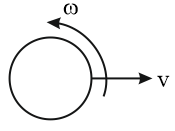The rotor of a ship rotates in clockwise direction when viewed from the stern and the ship takes a left turn. The effect of the gyroscopic couple acting on it will be
Important Questions on Motion of System of Particles and Rigid Bodies
A solid disc of radius and mass rolls down without slipping on an inclined plane making an angle with the horizontal. The acceleration of the disc will be , where is _______. (Round off to the nearest integer)
( acceleration due to gravity and angle as shown in figure)
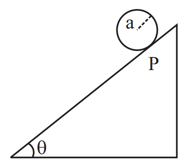
The angular speed of truck wheel is increased from to in seconds. The number of revolutions by the truck engine during this time is ______.
(Assuming the acceleration to be uniform).
A ball is rolling without slipping in a spherical shallow bowl (radius ) as shown in the figure and is executing simple harmonic motion. If the radius of the ball is doubled, then the time period of oscillation

One end of a rod of length is fixed to a point on the circumference of a wheel of radius The other end is sliding freely along a straight channel passing through the center of the wheel as shown in the figure below. The wheel is rotating with a constant angular velocity (in radian per second) about
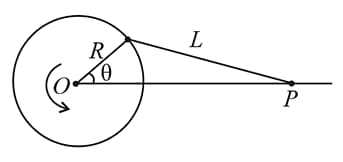
The speed of the sliding end when is
A wheel of radius "rolls without slipping with a speed on a horizontal road. When it is at a point on the road a small bob of the mud separates from wheel at the highest point and touches the point on the road as shown in the figure. Then is (g-acceleration due to gravity)
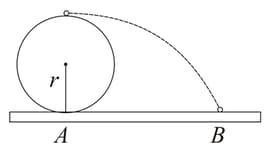
A rigid massless rod of length has two masses attached at each end as shown in the figure. The rod is pivoted at point on the horizontal axis. When released from the initial horizontal position, its instantaneous angular acceleration will be

A sphere, a ring and a disc of same mass and radius are allowed to roll down three similar sufficiently rough inclined planes as shown in the figure from same height.

Which of the following order is true for final of the bodies?
A particle of mass moving horizontally with a velocity collides and sticks to the bottom of the smoothly pivoted hanging rod of mass and length.
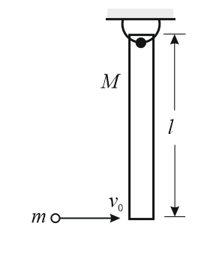
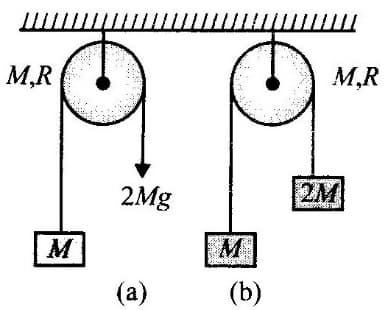
A solid sphere is set into rotation at an angular velocity and it is then, placed on a rough horizontal surface. The ratio of distances covered by rotational and translational motions up to the start of the pure rolling is (assume uniformly accelerated motion up to start of pure rolling):
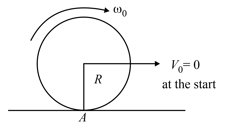
A cylinder moves with linear velocity to the right and angular velocity ω in the anticlockwise direction. The cylinder was initially at rest. The cylinder does not perform pure rolling and stops after some time. What will be the radius of the cylinder?
